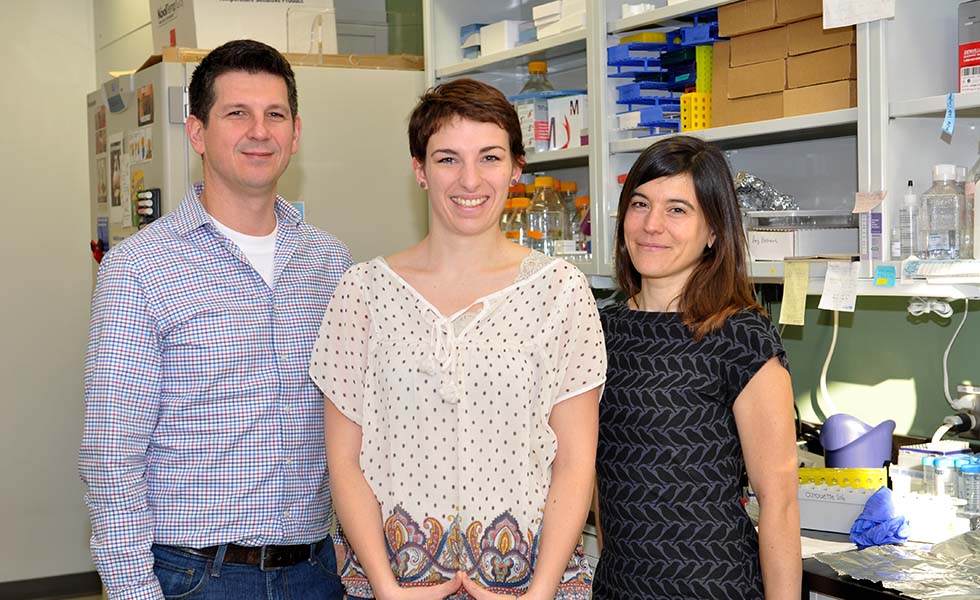
A study conducted by a research team led by Michel Cayouette, Full IRCM Research Professor and Director of the Cellular Neurobiology research unit, in collaboration with a team led by Stéphane Angers, Associate Professor at the University of Toronto, makes the cover of the latest edition of Developmental Cell following the discovery of a mechanism enabling the production of cellular diversity in the developing nervous system.
In order to multiply and generate new tissues, stem cells divide into two daughter cells, which are not necessarily identical: the daughter cells can differentiate to produce various cell types that are essential to proper tissue function. This is called cell diversification. However, the factors that drive daughter cells to be identical or different remain poorly understood by scientists.
To investigate this phenomenon, the IRCM team hypothesized that the orientation of stem cell division influences cell diversification. “To illustrate this idea, let’s suppose that we have on a table a red apple with the top part green and the bottom part red, explains Carine Monat, PhD student in Michel Cayouette’s laboratory and co-first author of the study. If the apple is cut perpendicularly to the table, we will have two identical pieces with red and green parts; but if we cut it parallel, the pieces will be different from each other, one red and one green.”
The researchers demonstrated that a gene named SAPCD2 influences cell division orientation. Moreover, they confirmed that the orientation of division controls daughter cell fates in vivo. To do this, they studied mouse retinal stem cells that were genetically engineered to express or not the SAPCD2 gene. “In the absence of SAPCD2, a good proportion of the divisions changed orientation and the daughter cells produced were different, explains Carine Monat. However, in the presence of the gene, the daughter cells produced were identical.” Therefore, the gene controls stem cell division orientation, which in turn affects cell diversification.
This discovery could improve the protocols to 'program' stem cells to generate a particular cell type of interest, like specific retinal cells that degenerate in diseases causing blindness. These would then be implanted in a patient to regenerate damaged tissues. Furthermore, this study will help design more targeted approaches to slow down tumour progression. Indeed, disruptions in cell division orientation were observed in some cancers, and SAPCD2 gene has been previously linked to the development of tumours.
About the study
The study was funded by the Natural Sciences and Engineering Research Council of Canada, the Canadian Institutes of Health Research, as well as the W. Garfield Weston and Brain Canada Foundations. The project was conducted at IRCM by Carine Monat and Marine Lacomme, under the supervision of Dr. Cayouette, in collaboration with the team of Dr. Angers, Associate Professor of the University of Toronto.




